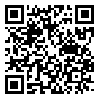BibTeX | RIS | EndNote | Medlars | ProCite | Reference Manager | RefWorks
Send citation to:
URL: http://jdisabilstud.org/article-1-1887-en.html
2- Assistant Professor, Department of Psychology Group, Payame Noor University, Tehran, Iran
3- Assistant Professor of Psychology Babol Branch, Islamic Azad University, Babol, Iran
4- Assistant Professor, Department of Sociology Group, Payame Noor University, Tehran, Iran
Background & Objectives: Adolescence is a transitional period from childhood to adulthood, and one of the most destructive behaviors in adolescence is high–risk behaviors. One of the destructive behaviors in adolescence is high–risk behaviors. People can perform these behaviors at any time, but they can bring very harmful results for people, their families, and society. One of the fundamental problems that plague teenagers during adolescence is risky behavior caused by emotional problems. Many factors play a role in the appearance of high–risk behaviors. One of these factors is how emotions appear when stress occurs under challenging conditions. Among the treatments that can control adolescents' emotions with high–risk behaviors is social–cognitive problem–solving skills. Teaching social–problem solving skills is a cognitive and emotional–behavioral process through which people try to create an answer to the problems they face and according to the situation. We aimed to investigate the effectiveness of cognitive–social problem–solving skills training in controlling the emotions (affections) of adolescent girls with high–risk behaviors living in Babolsar City, Iran.
Methods: This study was quasi–experimental with a pretest–posttest design with a control group. The statistical population comprised all high school girl adolescents studying in Babolsar City in the 2018–2019 academic year. Sampling was done in two stages: In this phase, 400 students were randomly selected by multistage cluster random sampling from all female students in the city; in the second stage, 85 students with the highest score on the Iranian Adolescents Risk–Taking Scale (Zadeh Mohammadi & Ahmad Abadi, 2008) were selected. Of whom 36 volunteered students participated in the study. Next, they were randomly assigned to the experimental group and the control group (18 people in each group). The inclusion criteria were having problems with high–risk behaviors based on the screening questionnaire, willingness to participate in the study, and not suffering from other disorders or drug use. The exclusion criteria were absence in more than one intervention session, simultaneous participation in other intervention programs, and unwillingness to continue the study. The two groups received a pretest, and the control group did not receive any treatment. The experimental group received cognitive–social problem–solving skills training for ten 1.5–hour sessions. Data in the pretest and posttest were gathered via the Affective Control Scale (Williams et al., 1997). To analyze the collected data, descriptive statistics indicators (frequency, percentage, mean and standard deviation) were used. With the purpose of inferential analysis of research data, multivariate covariance analysis (MANCOVA) was performed. Data analysis was done in SPSS version 23. A significance level of 0.05 was considered for all tests.
Results: The results showed that after adjusting for the pretest scores, there was a significant difference between the experimental and control groups in the components of anger (p<0.001), depressed mood (p<0.001), and anxiety (p<0.001). Also, the eta squared statistics showed that the educational intervention changed 45%, 50%, and 57% of anger, depressed mood, and anxiety scores, respectively.
Conclusion: According to the research findings, training in social–cognitive problem–solving skills is effective in controlling the emotions of adolescent girls with high–risk behaviors.
| Rights and permissions | |
 |
This work is licensed under a Creative Commons Attribution-NonCommercial 4.0 International License. |





